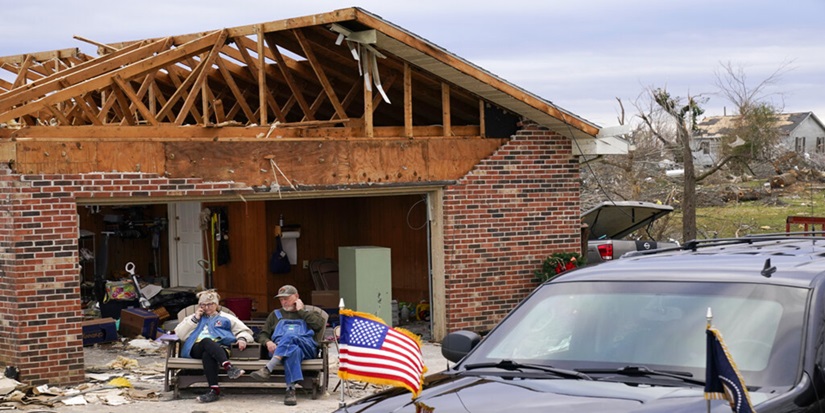Owning your home may be the American Dream, but to many Americans, it’s only a dream. That’s not new. Lower-income people have long had no choice but to rent.
Groups like Habitat for Humanity try to help. They build small houses using volunteer labor (lots of it, not just Jimmy Carter) and then provide 0% financing. Buyers—who are typically low-income, but not destitute—have to help build the house and show they can afford the payments.
All good but rising homeowners insurance rates are killing this service. In New Orleans, Habit for Humanity may have to foreclose on 100 of its own clients who can no longer afford insurance. In some cases, their house payments have doubled in the last two years.
Insurance is rising pretty much everywhere as insurers either hike rates or decline to renew policies. Faced with fast-growing claims costs, insurers often have little choice. Their business model has stopped working.
Last year, I called this an unsolvable problem. Insurance simply doesn’t work unless you can assess claims risk accurately and then price coverage to match it. Both are increasingly difficult.
Yet some think the solution is easy.
The Wall Street Journal editorial board, for example, says it’s a politically made insurance panic. It assesses the problem like this:
“The actual culprit is a bad storm of inflation, litigation abuse and government-made dysfunctions, which have been exacerbated by a string of bad weather.”
Those are important issues. Inflation drives up rebuilding costs, which means insurers must charge more. Lawsuits get out of hand sometimes. States impose requirements on insurers, often limiting what they can charge.
And that “string of bad weather” seems to get longer—and stronger—every month. Weird, unprecedented storms keep happening in places that don’t expect them. It’s almost like the climate is changing.
In any case, if this is a “politically made” crisis as WSJ’s editorial board says, that implies political changes would fix it. Really?
Take inflation, the first item on the list. Does it have a political solution?
Maybe, but right now, our gridlocked Congress isn’t solving even small problems, much less big ones like inflation. Nor is the Fed doing it. Jerome Powell’s crew hasn’t been able to get inflation anywhere near its 2% target. Housing costs are the biggest barrier, and there’s little reason to believe they will fall much.
As for lawsuit abuse and “government-made dysfunction?” Insurance is regulated by the states. That means 50 different states are trying to find what works.
Some of those states are solidly Republican, some solidly Democratic, and some are split. But all are having similar insurance problems. Here’s a chart WSJ provided.
(By the way, I found the full LendingTree study from which WSJ made this chart. The 10 “select” states it shows aren’t the top 10. The biggest price jumps, in order, were AZ, NE, IL, UT, TX, CO, SD, CA, MN, MT.)
If policy changes were an effective solution, wouldn’t some states have already found it? These are the “laboratories of democracy,” after all. Yet the biggest 2019–2024 insurance rate increases were in red Nebraska, blue Illinois, and swing state Arizona.
State policies probably help or hurt a little. They don’t appear to have created the problem, nor do they seem able to fix it—at least not yet.
The insurance problem has no political pattern, suggesting it’s not a liberal or conservative thing. This goes beyond anyone’s ideology.
What would make a difference? I think it would take some combination of:
None of those are easy.
More homes are being damaged because more homes are in the paths of hurricanes, tornadoes, wildfires, windstorms, and other weather-driven events. Short of forcing millions of people to move, I don’t know what would reduce claims. And it’s not clear where they could move that would be any less risky.
Repair costs are up not just due to inflation, but material prices and a shortage of skilled construction workers. This drives wages higher and raises insurer claims costs. Those could change… in a recession and housing market crash. Hardly a great alternative.
Higher insurance premiums are already happening to the extent state regulators allow. Some states could be more flexible. But ultimately, state governments respond to voters, and many voters are homeowners who can’t pay more.
At some point, more expensive insurance leads to lower home values as potential buyers build the cost into their offering prices. That’s not great, either.
So, the prospects for solving this are really quite low. That means insurers will keep raising rates where possible. They’ll simply withdraw from states where they can’t charge enough.
This will cause a growing number of homeowners to rely on state-sponsored risk pools. Those are more expensive and face the same problems. State taxpayers may not be able to sustain them.
Then what? Two possibilities:
These are terrible choices. The federal government already has too much debt, and it isn’t equipped to be an insurance company. But a home price collapse of this scale would be much worse than in 2008.
Choose your poison.
See you at the top,





